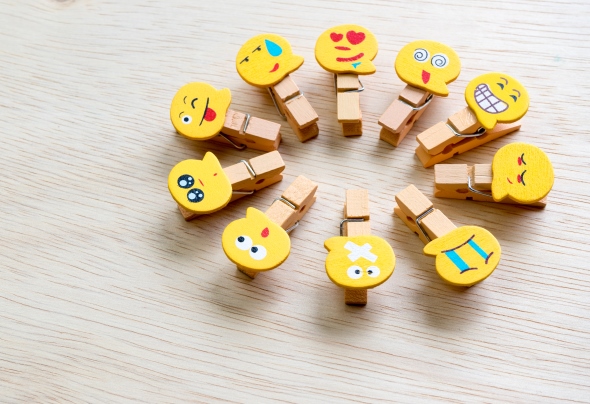
Thinking
Hit the emotional hot button for your brand

We’d all like to believe we’re highly rational creatures. But that’s just not true.
Practicality can play an important role in the decision-making process, but most of the time it is emotion that powers our decisions to act. Our brains are hardwired to give emotions the upper hand. And that’s why emotional branding is so effective.
You don’t have to have a big brand and a big budget to cash in on the bottom-line value of emotional branding. But you do need a clear understanding of your brand and your targeted customers to make emotional branding work effectively.
Think of it as two slightly overlapping circles. One circle represents your brand – your brand promise and personality, as well as the features and benefits of the products and/or services you offer. The other circle represents the emotional needs of your customers and potential customers. The overlapping area in the middle of these two circles is how your brand can help your customers, how it can solve their problems, make their lives easier or better and satisfy emotional needs.
Hitting the emotional sweet spot for your brand requires research.
If you haven’t taken the time to understand and articulate your brand promise and personality, that’s the perfect place to start. You need to understand your brand before you can figure out how it connects with what people want from your brand.
Research can help you connect your product’s features and benefits to an emotion that is important to your target audience. What are the hot buttons, pain points and connection opportunities? You can’t just assume that you know which emotions matter most to your customers and potential customers.
Some of the most commonly used emotions used in brand strategies include trust, security, love and belonging.
Trust
Trust is among the most powerful emotions for brand building, which is why it is used so often. But trust also comes with significant consumer expectations. There is no room for inconsistency when you use trust as the foundation for your brand messages and experiences.
Brand research can help you identify the specific ways to communicate and prove that your brand is trustworthy in ways that matter to consumers. Ask consumers which trust-related attributes they most associate with your brand. What do they expect from your brand? Do they trust you to deliver brand experiences that meet those expectations?
Once you know where your products and/or services connect with what consumers trust you to deliver, you can move forward with articulating and delivering a trust-based brand.
Security
Have you ever bought a product or service that offered a peace-of-mind guarantee or peace-of-mind protection plan? Most of us have, whether it was articulated that directly or not. The concept of security can take many forms. Lots of companies sell a sense of security because it works.
Use research to determine whether customers associate your brand with feelings of security or not. Ask customers to rate a variety of emotion-filled statements about your brand, brand experience, products and services. If you think security might be your emotional hook, test various ways your features and benefits could be related to security – both physical and emotional.
If the research shows consumers associate your brand with security, then you have the opportunity to leverage that in your marketing messages and brand experiences.
Love and belonging
Does your brand make people feel loved and like they are part of a larger group? Relationship brands like Harley Davidson and Apple do this very well.
You don’t have to have a huge marketing budget to build a relationship brand. But you do need to understand how the brand connects with people’s lives and how consumers experience the brand individually as well as with other people.
Use open-ended questions to provide the rich data that will help you identify the nuances in the connection people have with your brand and the brand experience. Combine that with rating and ranking questions to identify opportunities to create a sense of community around your brand.
This is another place where brand consistency is critical. Failing to meet expectations when your brand is about love and belonging has the potential to seriously damage your brand.
There are lots of other emotional hooks that can be effectively used in branding, including fear, guilt, competition, control, instant gratification, desire for freedom and independence, desire to be first, desire to get a good deal, desire for more free time – and more.
You probably noticed that most of these emotions are very egocentric. That’s because people don’t care about brands. They care about how brands can help them, make their lives easier or better, solve their problems, or satisfy their emotional needs.
As Dale Carnegie said, “When dealing with people, let us remember that we are not dealing with creatures of logic. We are dealing with creatures of emotion.”
That’s why emotional branding is so powerful.
This article originally appeared in the Corridor Business Journal.

